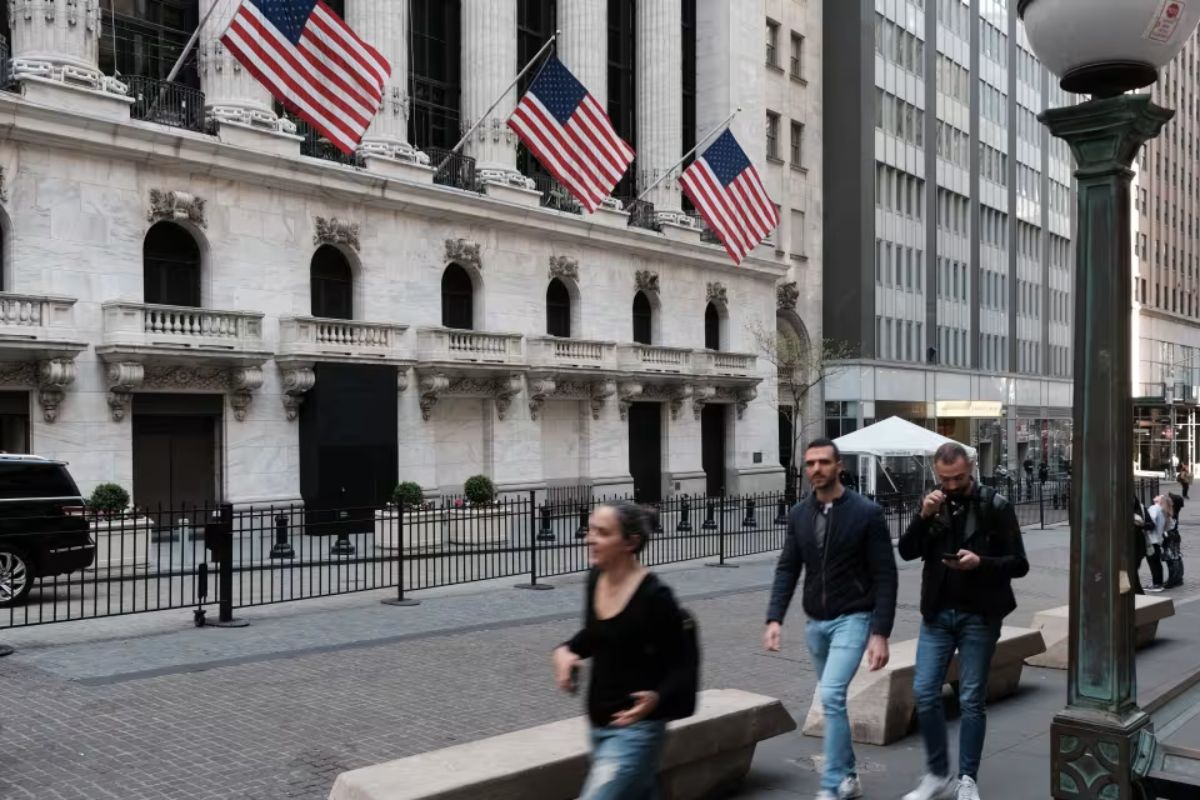US Regional Banks: In an era of economic uncertainty and rapidly changing market dynamics, the ability of U.S. regional banks to adapt to the shifting landscape of commercial real estate (CRE) has become a crucial test of their resilience.
As the fallout from the COVID-19 pandemic continues to reverberate through the business world, regional banks find themselves grappling with a myriad of challenges, from financing hurdles and high interest rates to the new reality of remote work.
With investor concerns mounting over potential risks and defaults, the industry is under intense scrutiny to respond effectively. The question now is: how are these banks navigating these turbulent waters, and what precautionary measures are being taken to safeguard against the storm?
The answers lie in the delicate balance of rainy-day funds, loan loss provisions, and strategic portfolio offloading. As we delve deeper into this topic, we will explore the industry-wide impact of the evolving CRE landscape and shed light on the strategies being employed to weather the storm.
Key Takeaways
- New York Community Bancorp’s sell-off has had a significant impact on regional U.S. bank stocks, highlighting vulnerabilities in the banking industry.
- Challenges in commercial real estate, such as obtaining financing and decreased office occupancy rates due to remote work, have made it increasingly difficult for developers and property owners.
- The COVID-19 pandemic has disrupted traditional business models, leading to vacant office spaces and struggling retail properties, increasing the risk of defaults on commercial real estate loans.
- Regional banks are implementing precautionary measures, such as bolstering rainy-day funds, increasing loan loss provisions, and offloading parts of their CRE portfolios to private equity firms, to mitigate risks and ensure stability in the face of a shifting CRE landscape.
New York Community Bancorp’s Impact on Regional U.S. Bank Stocks
What was the significant impact of New York Community Bancorp on regional U.S. bank stocks, and how has it reshaped the landscape of the banking industry?
Read More: Regional Banks Face Crisis as NYCB’s Unexpected Move Triggers Sell-Off
New York Community Bancorp‘s recent sell-off has sent shockwaves through the regional U.S. bank stocks, leaving investors and industry experts scrambling to reassess their positions. The stock’s decline, fueled by concerns over the bank’s exposure to commercial real estate loans, has exposed vulnerabilities in the banking industry and highlighted the need for closer scrutiny.
This sell-off has not only eroded investor confidence but also raised questions about the sustainability of regional banks’ business models. It is now clear that these banks must adapt to the shifting landscape of commercial real estate and take proactive measures to mitigate risks. This event has forever changed the way we view regional U.S. bank stocks and has forced the industry to confront the harsh realities of an ever-changing market.
Commercial Real Estate (CRE) Challenges: Financing, High Interest Rates, and Remote Work
The commercial real estate market is facing significant challenges, including financing difficulties, high interest rates, and the disruptive impact of remote work.
Financing difficulties: As banks tighten their lending standards and investors become more cautious, obtaining financing for commercial real estate projects has become increasingly challenging. This has led to a slowdown in new construction and a decrease in investment in existing properties.
High interest rates: The rising interest rates have made borrowing more expensive, putting additional pressure on developers and property owners. It has become harder to secure favorable financing terms, making it difficult for businesses to expand or invest in new properties.
Remote work: The pandemic has accelerated the trend of remote work, leading to a decrease in office occupancy rates. With more employees working from home, the demand for office space has declined, posing a significant challenge for commercial real estate owners and investors.
These challenges require innovative solutions and adaptability from all stakeholders in the commercial real estate industry.
Potential Risks and Defaults: Investors’ Concerns and Industry Response
Given the mounting concerns among investors and the need for a swift industry response, the commercial real estate market faces potential risks and defaults that demand immediate attention.
Investors are rightly worried about the stability and profitability of their investments as the economic landscape remains uncertain. The COVID-19 pandemic has disrupted traditional business models, leading to vacant office spaces, struggling retail properties, and a decline in rental income. This has increased the likelihood of defaults on commercial real estate loans, placing significant pressure on banks and lenders.
In response, both large and small banks are implementing precautionary measures to mitigate risks. Wells Fargo, for instance, has tightened its underwriting standards and is closely monitoring its commercial real estate portfolio. Smaller lenders are reducing their exposure to high-risk assets and diversifying their portfolios to protect against potential defaults.
However, these strategies may not be enough to withstand the challenges ahead. The industry must be prepared for a potential wave of defaults and work together to find innovative solutions that ensure the long-term stability of the commercial real estate market.
Precautionary Measures: Rainy-Day Funds, Loan Loss Provisions, and Portfolio Offloading
In response to the uncertainties in the commercial real estate market, banks are taking precautionary measures such as bolstering rainy-day funds, increasing loan loss provisions, and offloading CRE portfolios. These measures are crucial in mitigating the potential risks and ensuring the stability of the banking sector in the face of a shifting landscape.
- Bolstering rainy-day funds: By increasing their reserves, banks can better weather any downturns or unexpected shocks in the commercial real estate market. This provides a cushion for potential losses and helps maintain the overall financial health of the institution.
- Increasing loan loss provisions: Banks are setting aside more money to cover potential losses from non-performing loans in the commercial real estate sector. This proactive approach helps protect their balance sheets and mitigate the impact of defaults.
- Portfolio offloading: Some banks are choosing to offload parts of their commercial real estate portfolios to private equity firms. This allows them to reduce their exposure to the market and transfer some of the risk to other entities.
These precautionary measures demonstrate the proactive stance of banks in mitigating potential risks and ensuring the stability and resilience of the commercial real estate sector.
As the commercial real estate landscape continues to evolve, U.S. regional banks face significant challenges in navigating the industry-wide impact and ensuring their stability in this dynamic environment.
The shifting dynamics of the commercial real estate market, coupled with uncertainties surrounding the economy, have put immense pressure on regional banks to adapt and thrive. Investors are closely monitoring the exposure of these banks, as they understand the potential risks associated with commercial real estate.
With the ongoing pandemic and changing trends in the way businesses operate, regional banks must stay vigilant and proactive in managing their portfolios. It is crucial for them to closely monitor their loan loss provisions, assess the quality of their assets, and make strategic decisions to mitigate potential risks.
Adaptability and foresight are key for regional banks to navigate the challenges in the evolving commercial real estate landscape and emerge stronger in this new era.
Conclusion Of US Regional Banks
The shifting landscape of commercial real estate presents significant challenges for regional U.S. banks. Financing difficulties, high interest rates, and the rise of remote work pose risks and concerns for investors.
To mitigate these challenges, precautionary measures such as maintaining rainy-day funds, loan loss provisions, and portfolio offloading are crucial.
Navigating the evolving CRE landscape requires adaptability and strategic decision-making. Regional banks must stay vigilant and proactive to ensure their sustainability in this ever-changing industry.
Our Reader’s Queries
Q1 Which banks have largest commercial real estate exposure?
A At the close of the first quarter, Wells Fargo Bank NA held the most substantial Commercial Real Estate (CRE) portfolio among the top 20 CRE lenders. Its CRE loans experienced a year-over-year increase of 4.2%, reaching $141.86 billion by quarter-end. In comparison, JPMorgan Chase Bank NA witnessed a 3.2% rise in its CRE loans, reaching $134.59 billion.
Q2 What are commercial banks more exposed to?
A Market risk primarily arises from a bank’s engagements in capital markets, stemming from the inherent unpredictability of equity markets, commodity prices, interest rates, and credit spreads. Banks face heightened exposure if they extensively participate in capital market investments or engage significantly in sales and trading activities.
Q3 Why are regional banks in trouble?
A Presently, regional banks are endeavoring to reduce their size as a means of restoring financial well-being. They encounter substantial challenges such as high deposit and technology costs, along with the prospect of more stringent regulations.




